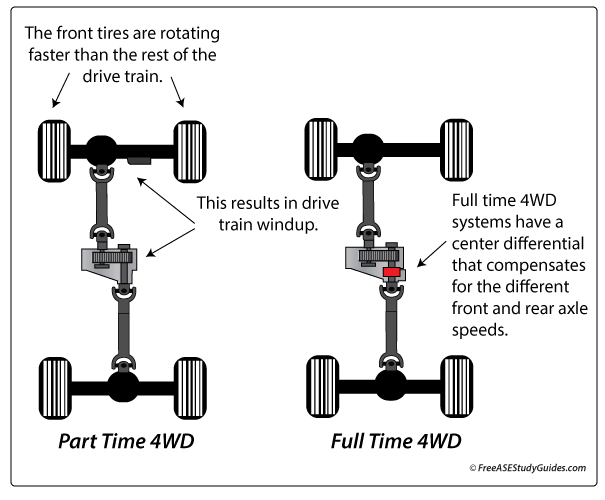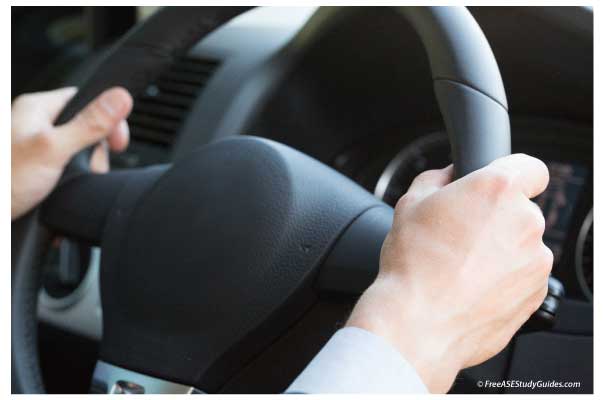Driveline Windup

Drivetrain windup occurs when the front and rear axles of a 4WD vehicle rotate at different speeds. It's the reason why Part-time 4WD vehicles should not be driven on dry pavement: because there's little or no slip. The front tires on these vehicles rotate faster than the rest of the drivetrain. They bind up because many part-time 4WD transfer cases do not contain a center differential. A center differential compensates for different axle speeds like all-wheel drive and modern automatic 4WD vehicles do. Driving on non-slip surfaces puts excessive stress on the rest of the drivetrain, resulting in damage to the differential, axle, and transfer case.

Hard steering and an unmanageable ride occur as gears, bearings, and internal components are forced together beyond specifications. It often results in a costly repair that could have been avoided by keeping the vehicle in 2WD on dry pavement and using 4WD for off-road use or surfaces with enough slippage. It may get stuck in 4WD. On some vehicles, backing or jacking up one tire will 'unwind' the drivetrain enough to get it back into 2WD. Be careful; the tire may forcefully spin as the drive train unwinds.